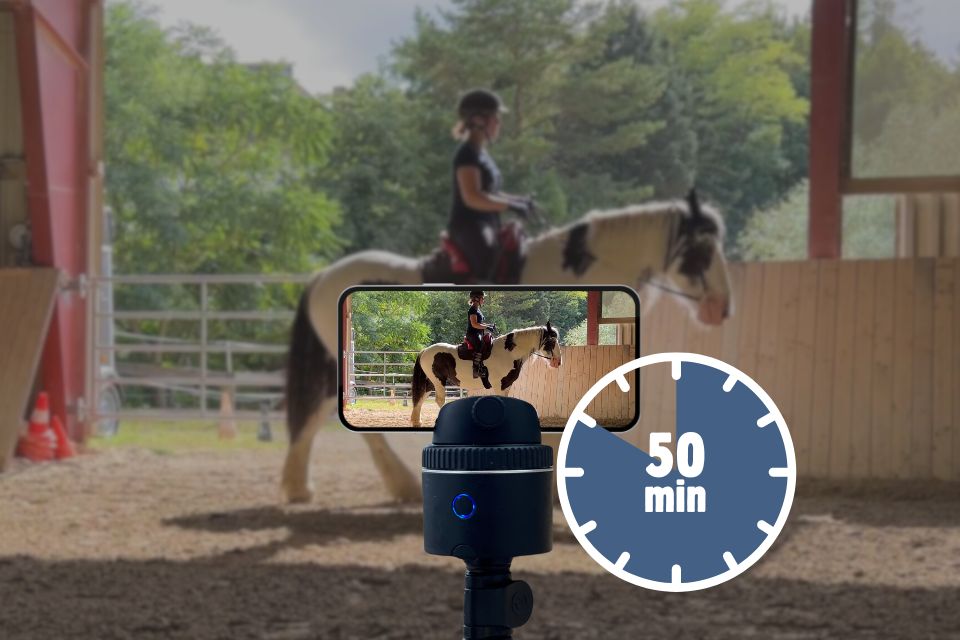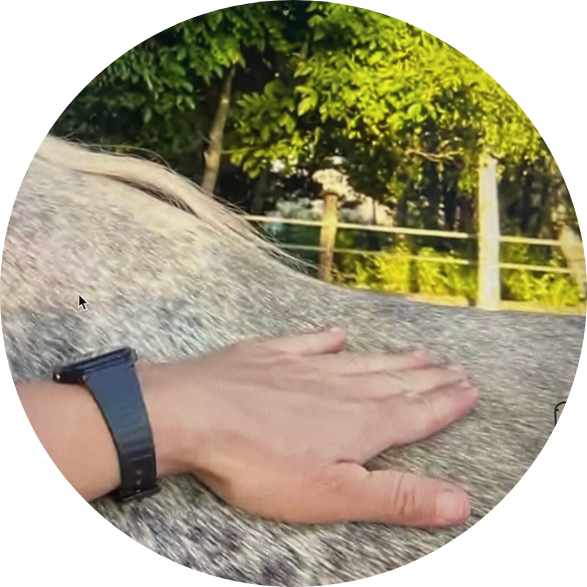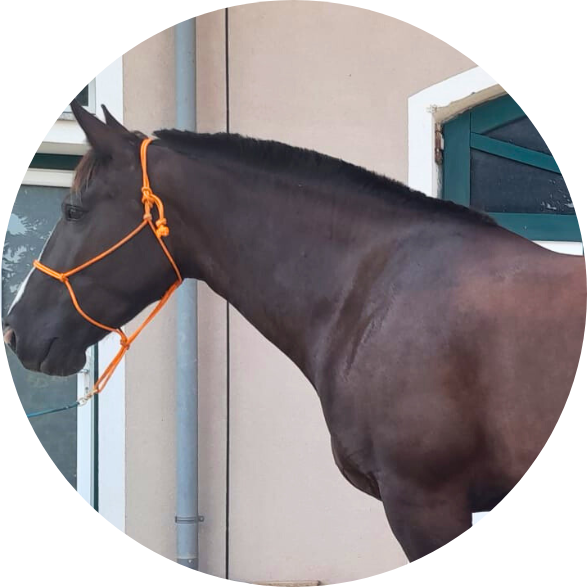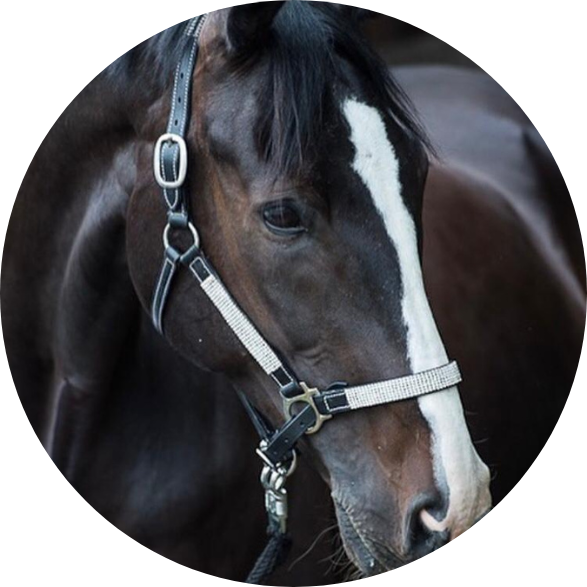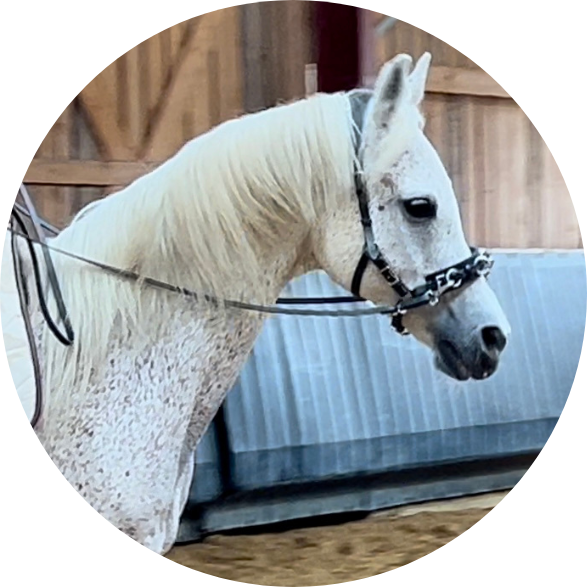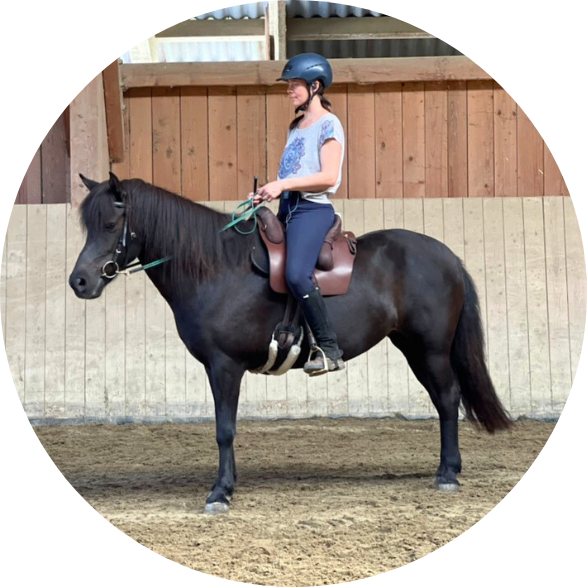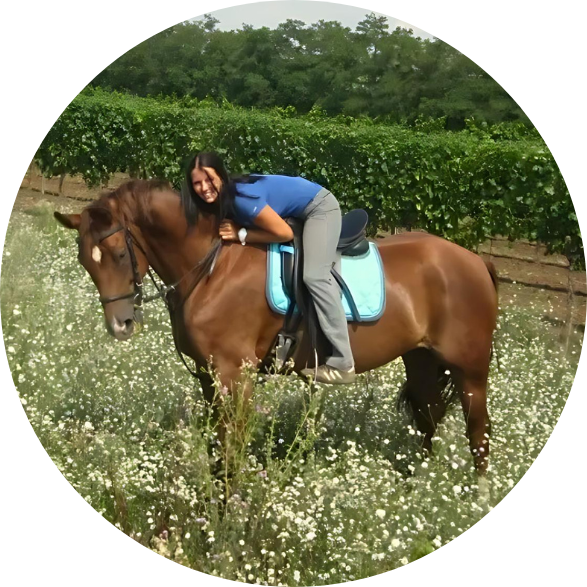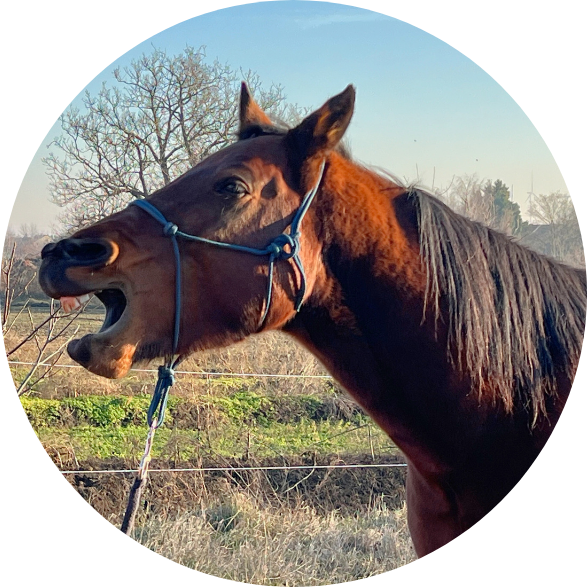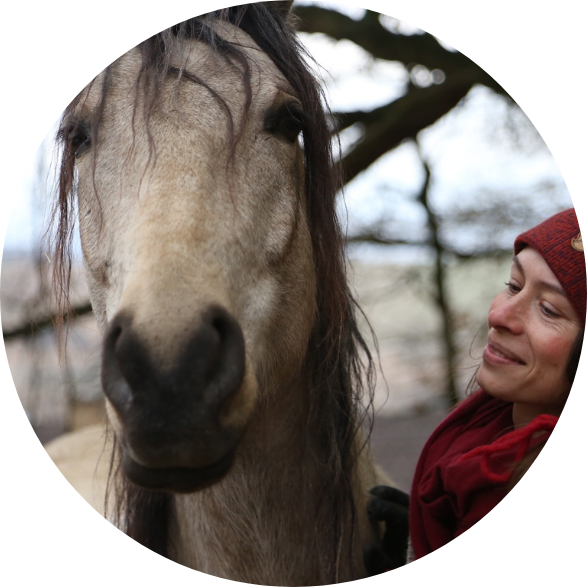
I look forward to helping you & your horse!
Johanna Thanheiser
Horse trainer for health maintenance and author of Equisensomotoric® Training and TTT
Professional competence
In my ten years as an official instructor for biomechanics courses at agricultural training institutes throughout Austria, 99% of the riders who have attended my courses have rated my professional competence as excellent (5 out of 5 stars) in anonymous feedback forms.
Over 400 horses
In my biomechanics courses and in my mobile teaching practice I have already had the pleasure of getting to know over 400 different horses and accompanying them on their way to sound movements – of different ages, breeds and with a wide variety of training issues.
50 minutes
1:1 ONLINE LESSONS
Are you concerned with questions around your horses training?
How can I get my horse off the forehand and reduce the load on the forehand? What can I do to stop my horse hollowing his back? How can I build up muscles on my horse? What can I do to collect and lift the trunk of my horse? How can I build up my horse’s topline and reduce his underneck? What exercises can help with muscle shortening after lameness recovery? What is meant by correct rotation of the spine in horses? What can I do if my horse is stiff, difficult to sit at trot or canter or hard to steer? Are there exercises that allow traumatized horses to regain trust in humans? What helps with a sensitive horse’s back?
Then you are probably like many riders, because these topics are common ones at the start of training. Training horses or riding itself can be frustrating and you can easily get lost in the many opinions out there about how to train horses correctly. Finding all the answers on your own can sometimes take years and, unfortunately, trying things out without guidance can even harm your horse in worst case.
As a horse trainer in my main profession, I have already successfully accompanied a large number of similar processes and issues and can very likely save you and your horse from common mistakes (and bills that might come with it), frustration and precious time. Through solving training related problems, you can enjoy riding again, spend more years in harmony with your horse and enjoy how your horse is getting fitter every day through correct riding style.
- Learning how to correctly train your horse or even ride it towards soundness is, to be honest, a complex, but learnable skill. Comparable to learning an instrument, individual personal guidance and lessons is the best way to learn this skill. Regardless of where you live, you can learn personally from me, how to correctly train your horse and ride it towards the seven health goals: straightness, balance, carrying strength, sound gaits, stability of joints, suppleness and serenity.
- In easy-to-understand words, I will show you in private online lessons, tailored to you and your horse, which specific exercises will help you at this point. We can also discuss all your questions and I will give you specific instructions on how to increase your horse’s wellfare, motivation and overall well-being.
- You will receive targeted feedback on voice, rein and seat aids, the ESM markers, your timing and everything that goes with it, so that the course is set for success in terms of keeping your horse as healthy as possible and content. You will also receive information on what, in my experience, could currently be detrimental to your horse’s health and I will of course explain why I think so.
- In the process of analysing your problems, I might also recommend you to reach out for other professionals or vets, if I see that, based on my experience, the problem you are facing with your horse is not related to training or musculature. I do so, because the true and lasting improvement of the health and wellbeing of your horse is my first goal.
- At the end of the session, I will also provide you with a written summary of what the most important inputs of the session were and what the next training steps are.
Book dates
When you make your first booking, you will be asked for your email address and a password. This enables us to send you an appointment confirmation and a reminder the day before. The booking tool also makes it very easy to reschedule up to 4 hours before the booked date (e.g. if the weather is forecast to be bad and you don’t have an indoor arena).
how online lessons work
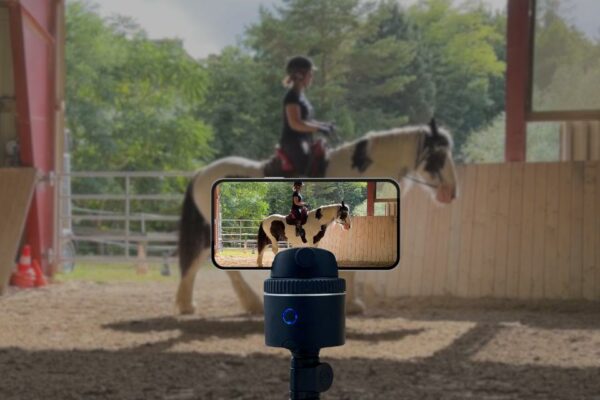
It is basically as easy as a facetime call or whatsapp videocall.
The 50-minute online lesson takes place in real time in your riding arena and we are connected via a video conversation app.
You will need:
- Stable Internet connection in the barn (Wi-Fi or via your cell phone network)
- Smartphone (stands in a corner of the riding arena so that I can see you)
- Bluetooth headphones (so you can hear my instructions)
Optional: Pivo Pod (a practical camera robot that rotates with your cell phone) using the free app Pivo Track
What my clients say
FaQ 1:1 Online Lessons
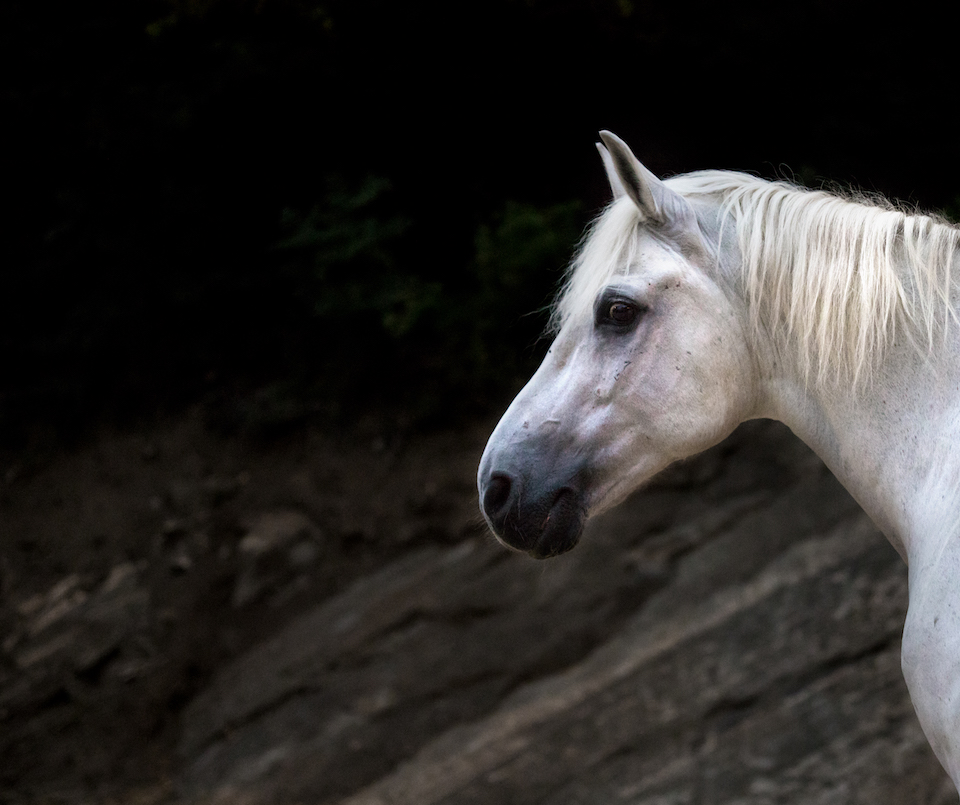
Sign up for the bi-annual Equisensomotoric® newsletter and be the first to get the latest news!
Of course you can unsubscribe from the newsletter at any time.
After you have clicked on “Subscribe”, you will receive an e-mail from us in which you have to confirm your e-mail address once.
Check your spam folder to make sure you receive the Equisensomotoric® newsletter.


